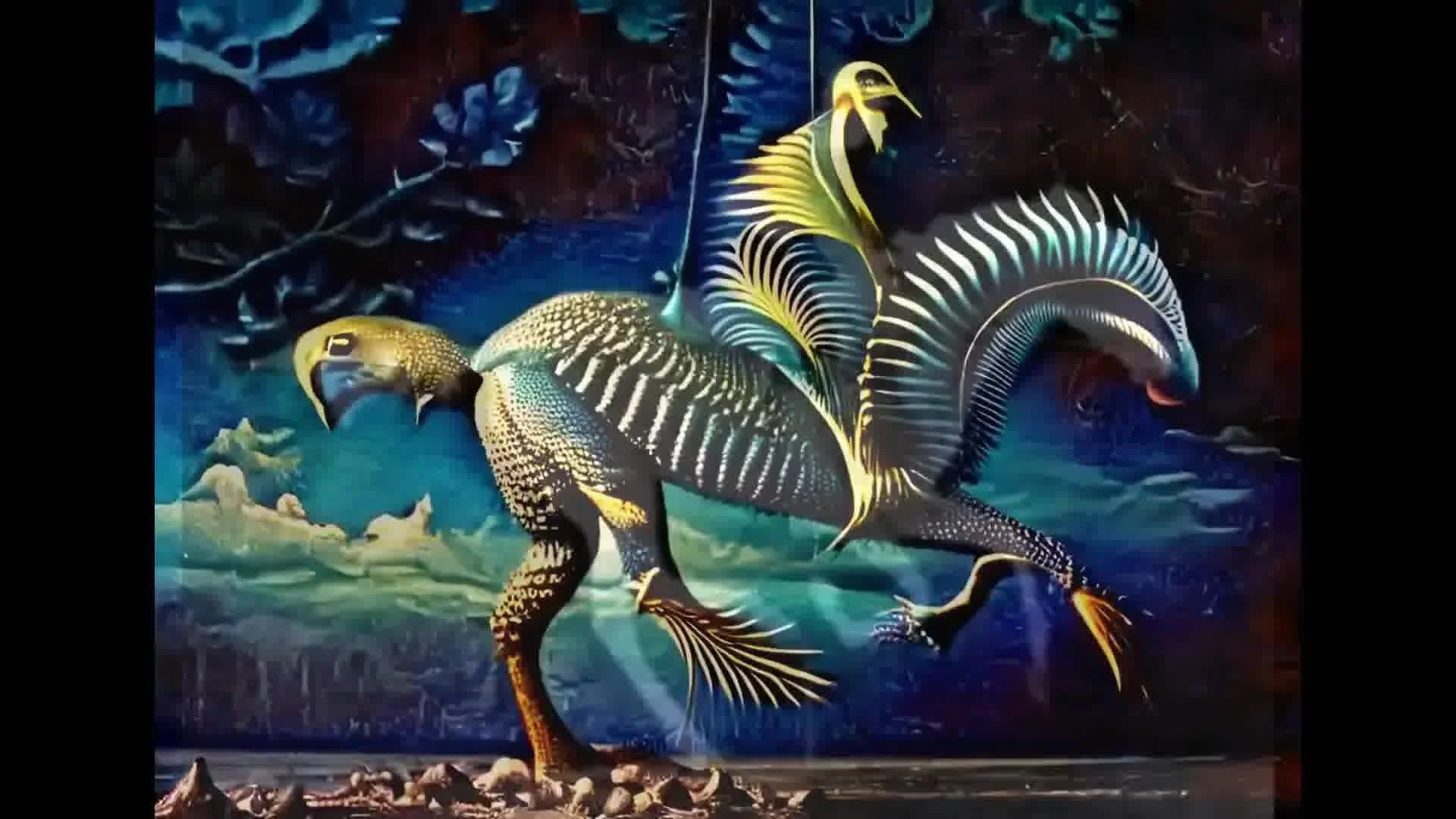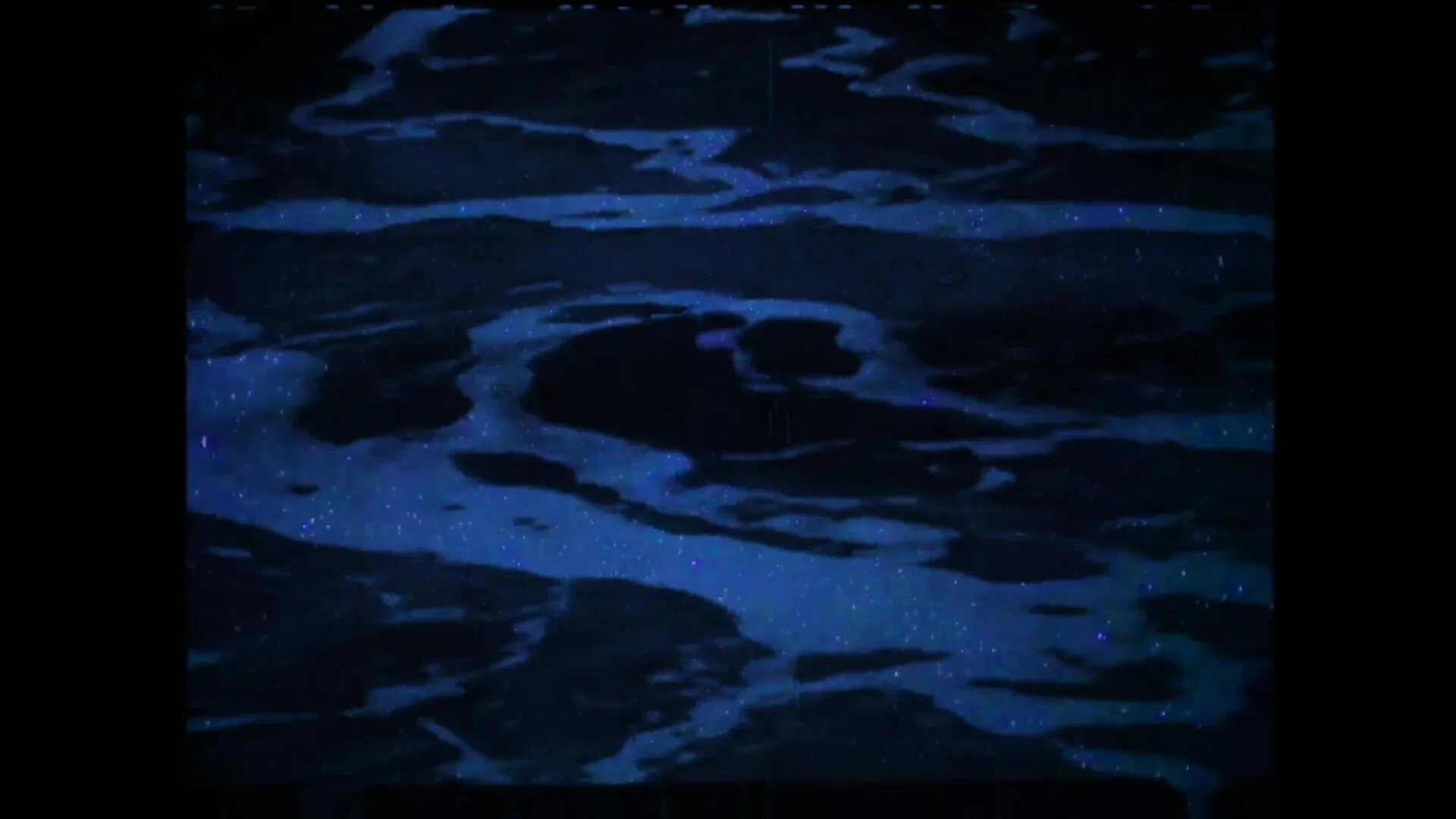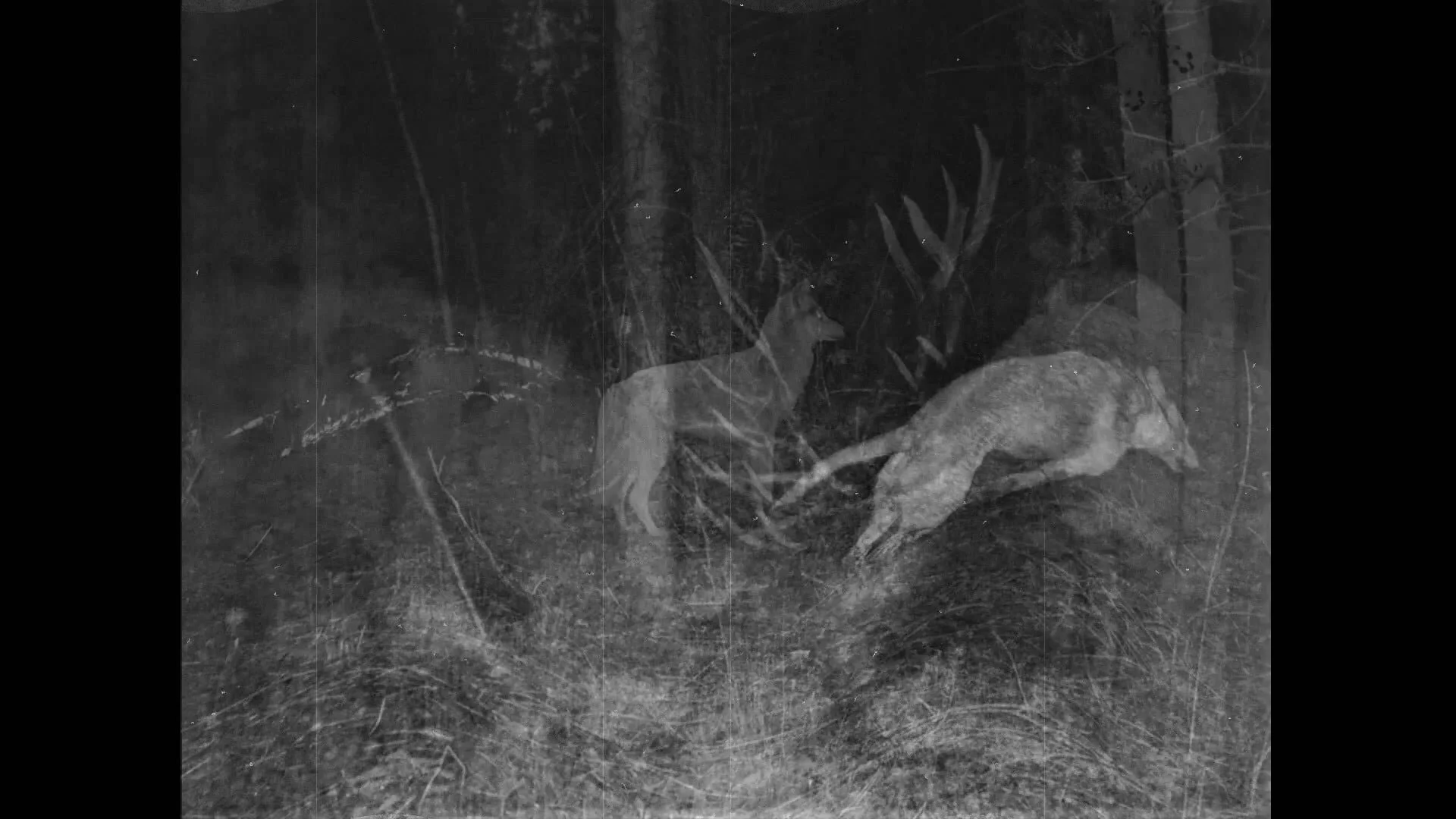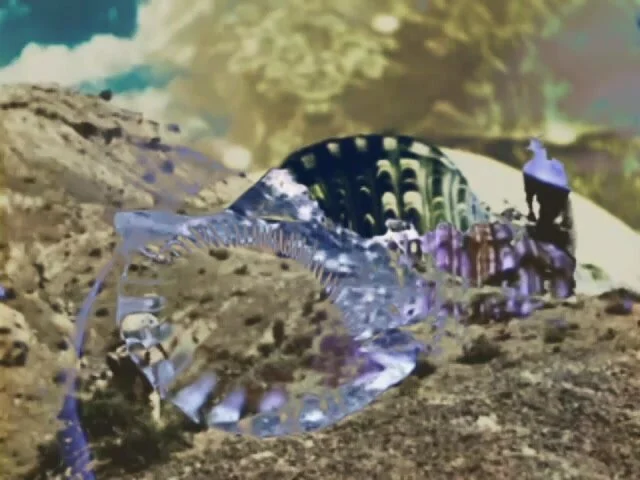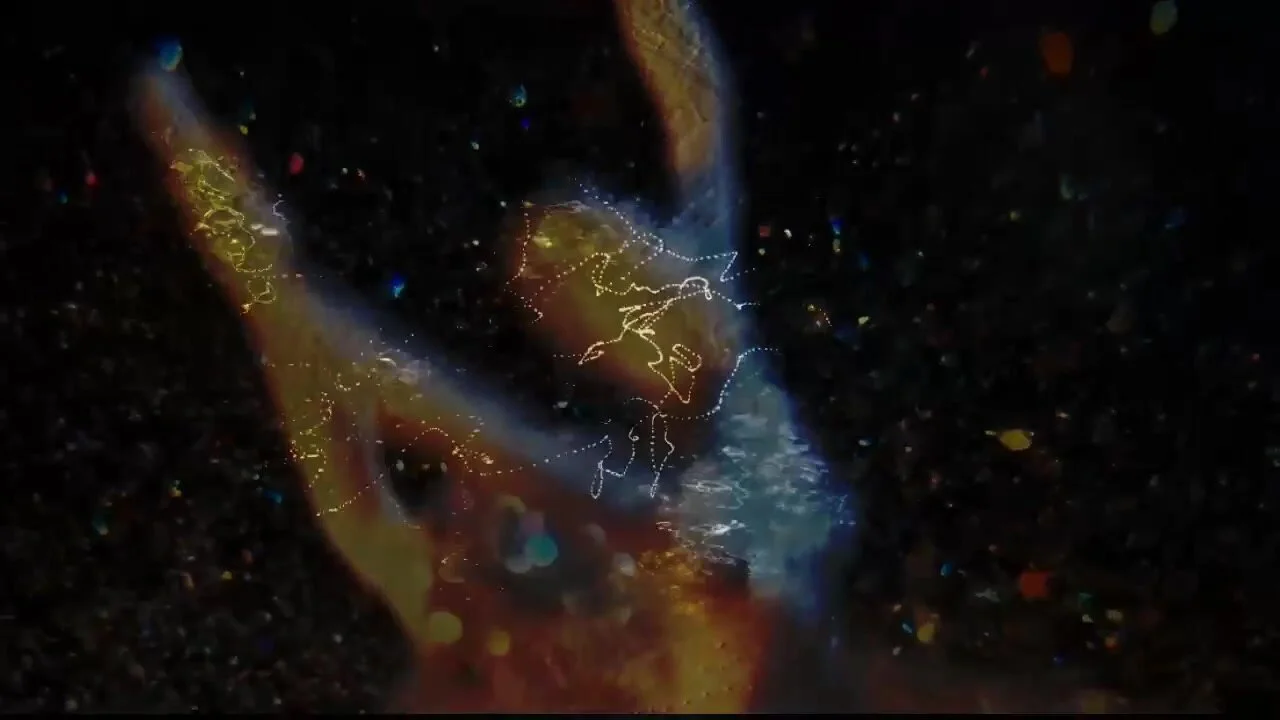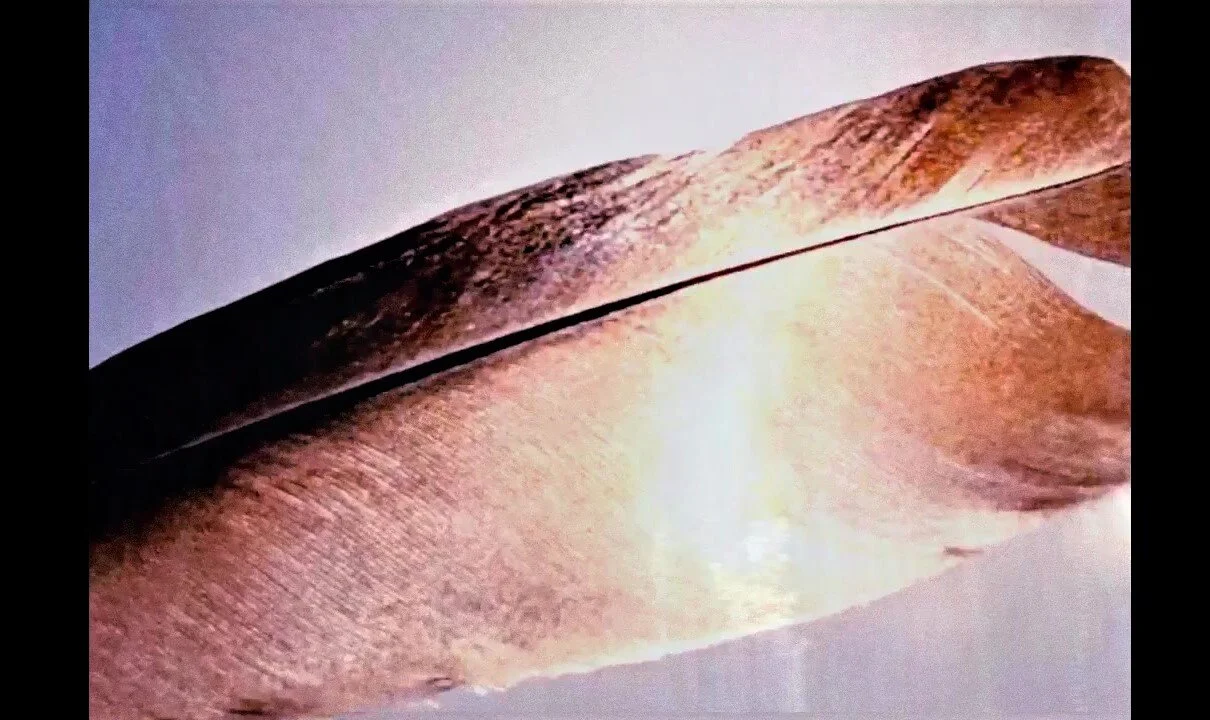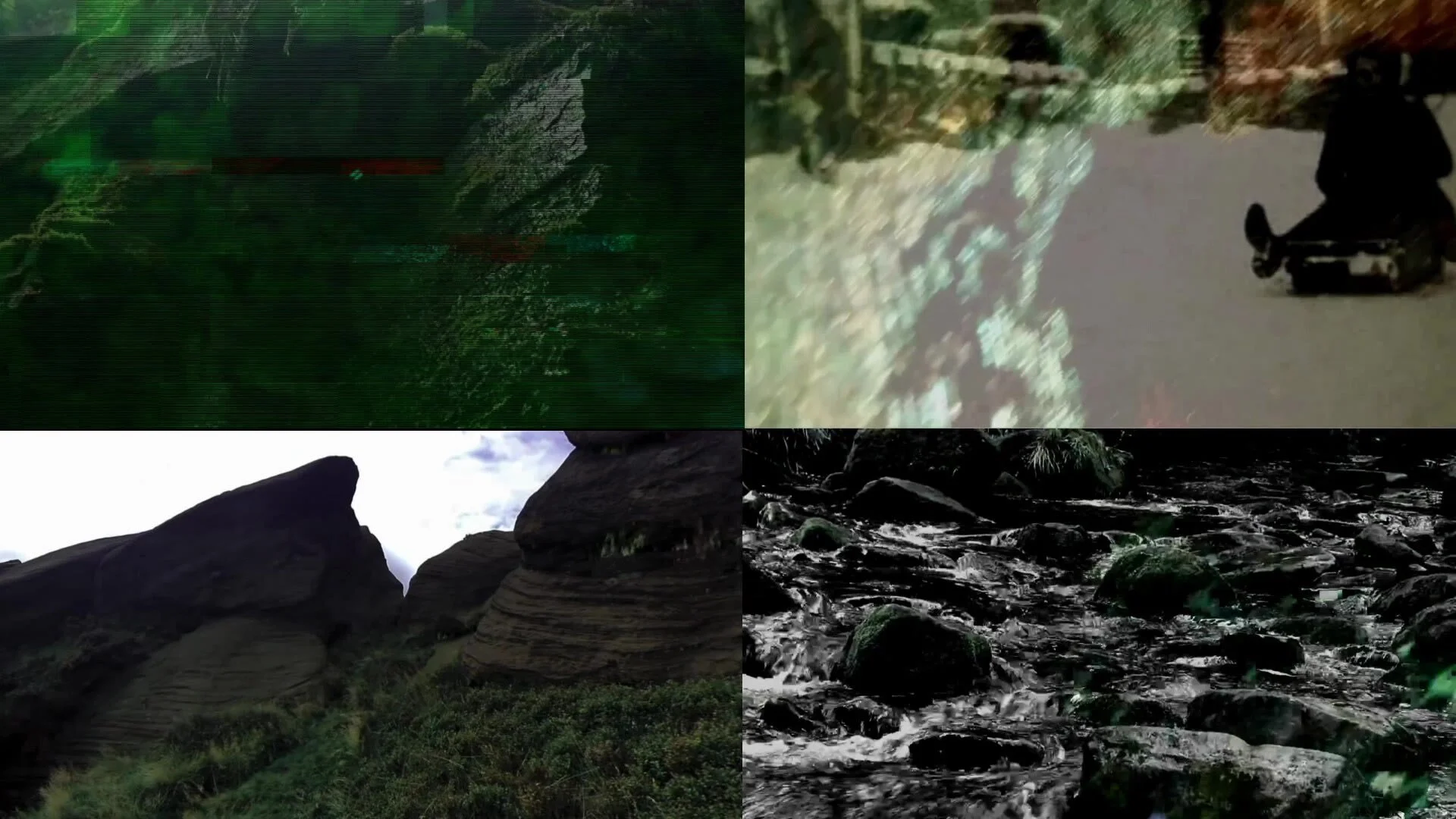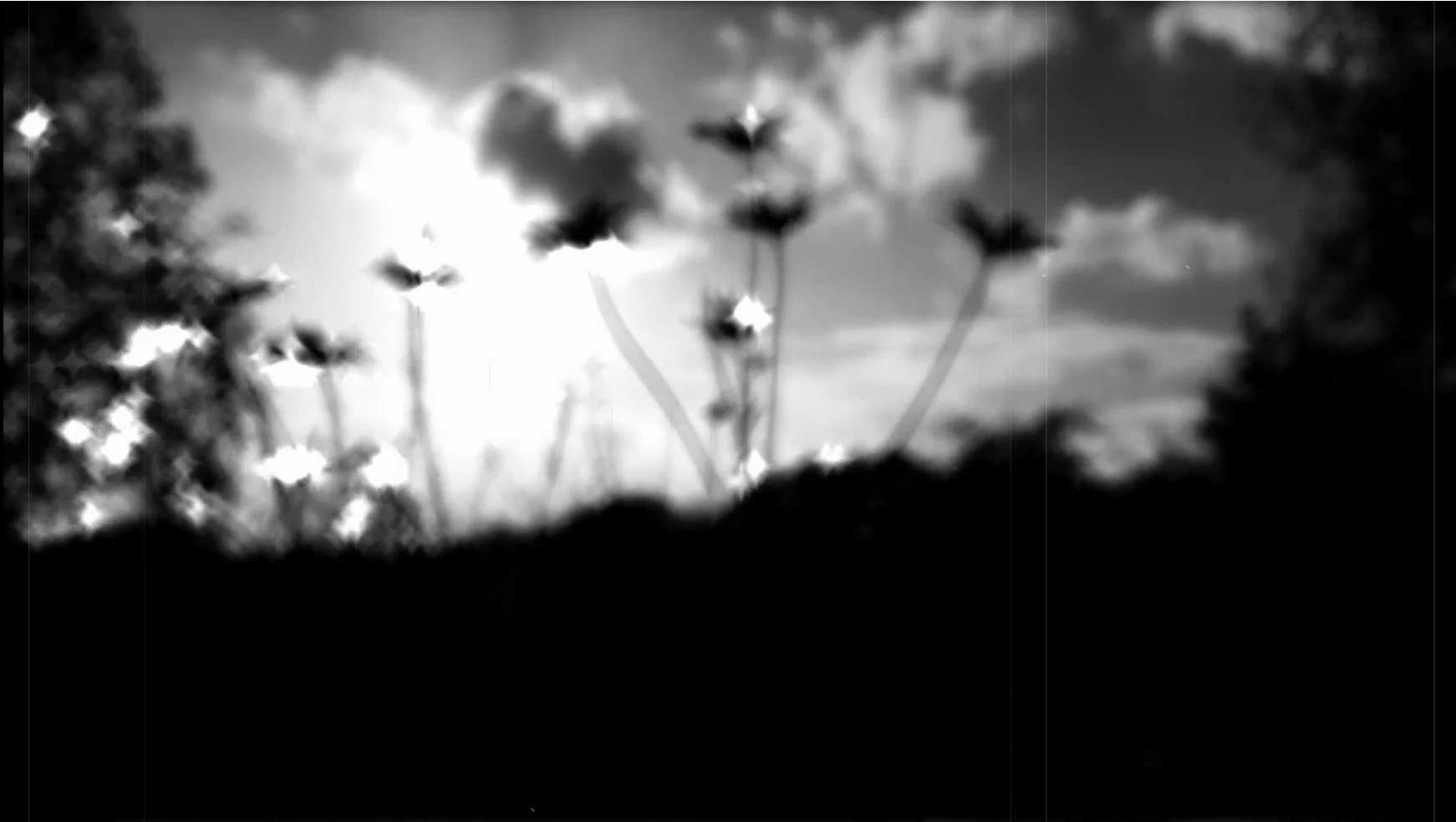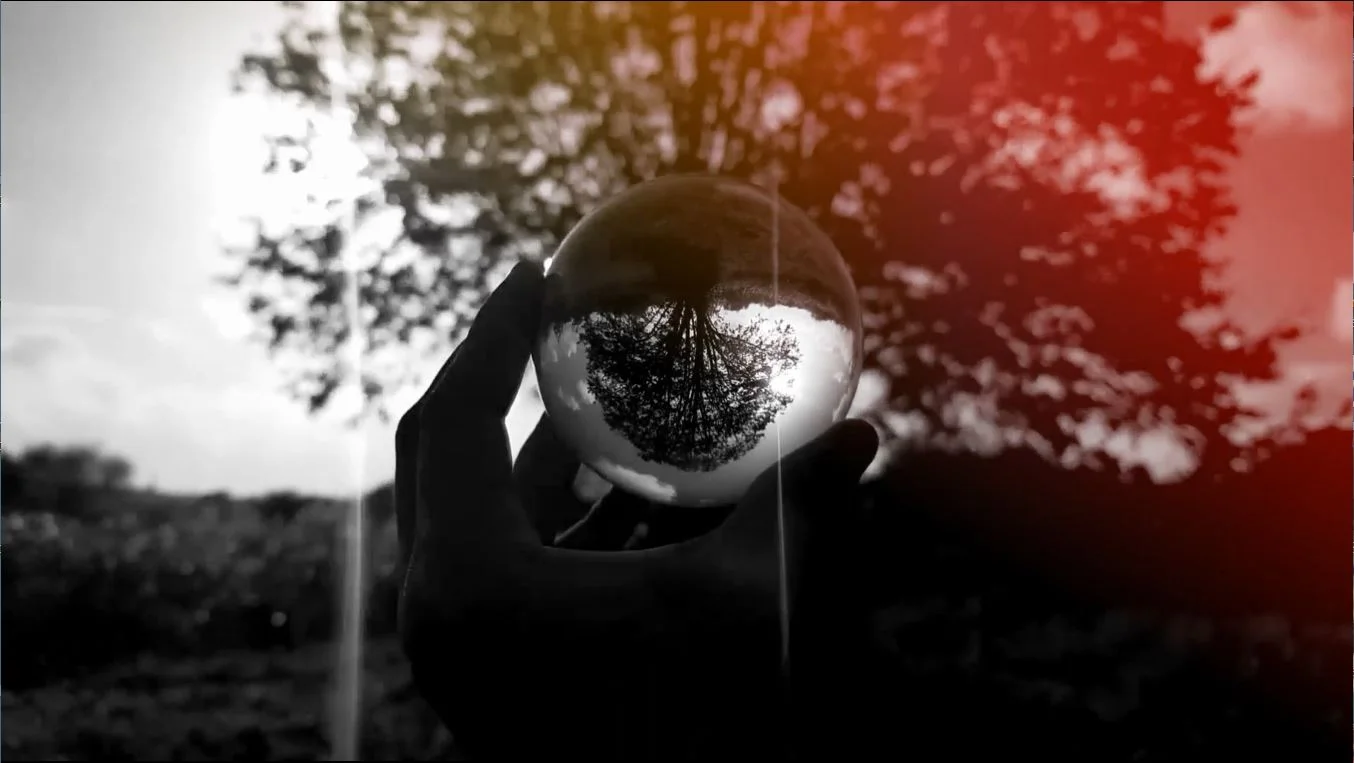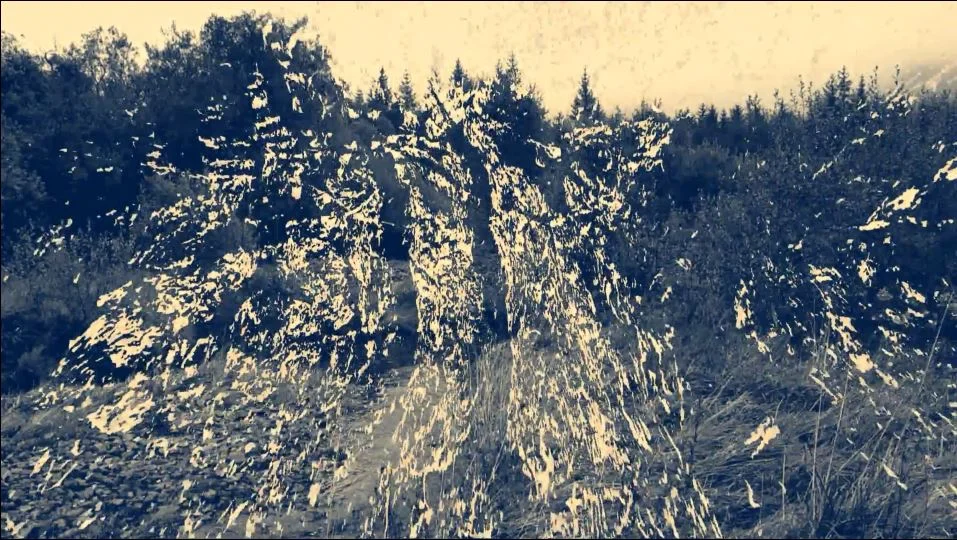Amy Cutler’s films often explore archives, voices, and nonhuman perspectives; in 2019, The Observer described her works as “resembling a film told from the point of view of a butterfly”. Recently she published an article about her film work, ‘Square Eyes, Square Landscapes’, in the April 2020 open access issue of MIA (Moving Image Artists), which explores the connection of experimental filmmaking with cultural concepts of landscape. Her films have also been profiled by the open access journal Something Other in the special issue On Ecologies (Nov 2017). In June 2019 she was the Artist in Residence at the Phoenix Cinema, Exeter as part of the Sex and Nature public programme; on 28th June 2019 her work was showcased as the second Moving Image Salon at Film and Video Umbrella. Cutler is currently working primarily on two film projects; a study on extinction narratives, based on overwintering on an uninhabited island, and a collaborative omnibus film, in which she is one of several filmmakers across the world adapting previously unseen 8 and Super 8mm footage from home movies, in an archive based project led by filmmakers Stephen Broomer and José Sarmiento-Hinojosa.
SPECIES PIRACY (2024)
Species Piracy is a live cinema ensemble inspired by the dark arts of de-extinction (full information here). A Blu-Ray DVD is being released of the linear format of the film project, combining artificial cinema, lab science experiments, and artificial intelligence, alongside a short booklet of essays. The film explores temporal slips and the ways a biological medium can disobey basic concepts of irreversibility in digital bio-images, ghosts, clones, dreams, progeny, and ushers of the uncanny, as humans continue to create new scientific fantasies for dying, splicing, grafting, mourning, reviving, and surviving.
We Were Foolish Like The Flowers (2023)
I have primarily stopped uploading films and film samples here in favour of live cinema and commissioned feature projects. This is an extract from AV experiments in progress. It’s a sample from a film project deliberately using only waterlogged devices and a waterlogged phone, inspired by the "anti-geography" of Nancy Holt's Swamp (1969). Filmed in Sehuaya canyon, home to the last living river in Mexico city.
Between the Avenues (2021)
This track by Lines of Flight draws on the insights of walking in San Francisco and witnessing its disparity of wealth. The video translates these themes along lines of restriction and escape in lockdown. It filters static shots through closed and open skies in altered and combined horizons, inspired by the divided experiences of 2021 in access to green or open space. Remembered or dreamed landscapes frustratingly co-exist in stationary locations, with footage in central Leeds, on Almscliffe Crag, and even the view from the my first post-lockdown train out of London. (It was also entirely filmed on Yorkshire Day 2021.) Releasing on this Youtube link at 7.45pm on Thursday 9th Sept.
To Stop Time (2021)
This was an abandoned music video which animated the song’s Romantic principles of time and memory. Monochrome archives are balanced with eerie injections of colour, suggesting a spacey strangeness, moving through the massive scale of galaxies and constellations. Inspired by the sounds of synth dreampop as well as gendered traditions of the “muse of memory” and its motifs – roses; waves of the sea – the video is a comment on these media histories as much as it is on the song’s existential languishing. It includes the triptych film panels of an unknown director’s 1925 setting of Thomas Bailey Aldridge’s poem ‘In Youth Beside the Lonely Sea’ – perhaps also itself a precursor for this song.
Disappearance (2021)
Obsolete media and obsolete animals, running to survive. The song’s theme of lost futures is explored via ghostly or captive lives on an ark heading nowhere. From Prelinger home movies to night vision cameras to the last surviving footage of endlings (the last individual in a species), this multi-format film exposes the fate of the electric animal in the mausoleum of cinema.
In 2021 I am collaborating with the band Lines of Flight to create a film each month, for each of the tracks in their lockdown album, Signs of Life. Each music video will be released on their Youtube channel on the same day as the song’s release.
The Video Book of Orchids (2021)
Sponsored by the international Empire & Ecology research group at UCD, this film and video essay is a response to the imperialism of orchid collection, as well as an anatomy of a picture book, or the herbarium re-mediatised. Taking orchids as the 'ambassador plants' in focus and drawing on traditions of botanical illustration, it explores the virtuality of the image as well as contemporary flower life during lockdown. Read more and watch the film here.
I Remember Everything (2021)
Drawing on the song’s references to political foreboding, abandonment, and a coming storm, the film balances rain and rust in urban edgelands. The crows are harbingers, but also a throwback to the flying bodies in the earlier music videos.
In 2021 I am collaborating with the band Lines of Flight to create a film each month, for each of the tracks in their lockdown album, Signs of Life. Each music video will be released on their Youtube channel on the same day as the song’s release.
Signs of Life (2021)
In 2021 I am collaborating with the band Lines of Flight to create a film each month, for each of the tracks in their lockdown album, Signs of Life. Each music video will be released on their Youtube channel on the same day as the song’s release. This film and song released on June 4th. From Dorset to deep time, the video combines Super 8, VHS, animation and geology watercolours to suggest at the “fragments of answers” in the song. The spirit of Mary Anning is hinted at by balancing the men of fossils and science with the young beachcombing girl and Watson Kintner’s rare archival fieldtrip footage of a seashell market.
Neverending Horizontal (2021)
This widescreen film was designed for raxil4's improvised set at Skronktronic (New River Studios, 26th May 2021). Inspired by what I think of as the video pathetic fallacy of my generation - the Romantic slough of despond scene from The Neverending Story (1984) - I manipulated and re-animated the source, in reference also to the loops of Malcolm Le Grice’s Berlin Horse (1970). This is one part of ongoing work I am doing to re-mediatise VHS childhood memories of The Neverending Story, which was originally screened in widescreen Panavision 2.35:1 anamorphic, but which I have only ever experienced in 4:3 television/VHS format. While it is the formative emotional scene in my landscape imagination, my memories of it, and of landscape itself, are in VHS. This animated, multiply-layered film version, which explores the strange widescreen horizontal of the slough, seemed an ideal fit for raxil4's low frequency sinewave, which is quadrupled to produce monaural beats. (This gif explains the science of Raxil4’s live sound performance.)
Skronktronic set (for Psychiceyeclix), May 2021
This video was for the live improvised set by Pyschiceyeclix at Skronktronic (New River Studios, 26th May 2021). Pyschiceyeclix performs with circuitbending, robot drumming, self made fx and hacked toys/synths. He has created work about transmuted pyramids and ancient spaces. The video therefore draws on landscapes, computerised fossils, and the Ancient Astronaut Theory.
Heading Out To You (2021)
In 2021 I am collaborating with the band Lines of Flight to create a film each month, for each of the tracks in their lockdown album, Signs of Life. Each music video will be released on their Youtube channel on the same day as the song’s release. The second is Heading Out To You, released on Friday 7th May. The emotion in the song is echoed by the film's splintered, chilly nostalgia. Rather than using digital effects, it journeys into winter through a hand-held overlay of lantern slides, snow globes, and other souvenirs. This creates a shimmer between 2D and 3D worlds, suggesting an alternative space and time in memory.
Moth Eaten Heart (2021)
In 2021 I am collaborating with the band Lines of Flight to create a film each month, for each of the tracks in their lockdown album, Signs of Life. Each music video will be released on their Youtube channel on the same day as the song’s release. The first was Moth Eaten Heart, left, which premiered on 23rd April. Channelling the song's narrative of escape and solace, the film is inspired by lifting bodies. It combines animation, public domain footage, and filming inside my London housing estate during lockdown.
LUDCHURCH CHANNEL (2020)
Commissioned by Stoke Festival 2020, this archival film re-mixes private and public ecological histories to consider individual and shared landscape, including work with the Staffordshire Film Archive, and fieldtrips to Lud’s Church with a Yashica Dental Eye camera. The project also aims to understand how a festival commission – and a festival itself – can connect us online. In particular, it draws on moving image histories of the Garden Festival in Staffordshire and its links to regeneration, as well as being inspired by legends of seasonality connected to the Green Chapel / Lud’s Church. Read more and watch the film here.
You Call It Sundew (2020)
A feature length film commissioned by Animate Projects and Fermynwoods Contemporary Art, excavating and re-mixing the archives of steel extraction and metallurgy in Britain. The film creates new sound and footage about extractive politics, multi-species storytelling, limestone, fossils, factory symphonies, carnivorous plants, underwater warfare, and the techno-masculinist voices of the Anthropocene. It can currently be viewed in full online as part of the Triple Harvest virtual exhibition. Full details on the film, process, score, and limited edition artist’s prints are available here.
PILOTS (2020)
Created as a daily collaboration in the first UK lockdown, this is a video book of 31 short “audio-visual specimens”, based on the pilot fish, and also the pilot episode or experimental broadcast. This project also exists as a livestreamed performance based on a mini laboratory of specimens, drawing on the meaning of specimen as ‘way of seeing’. All 31 films can be seen here.
Guitar Tests (2020)
Less of a film, more of a video sketch of some outdoor memories from 2019 which are impossible in 2020. I’ve been using these miscellaneous outdoor film scraps/ flashes of hindsight from last year in my first few days of teaching myself the guitar in the early mornings (while anticipating the isolation/boredom of a second lockdown in my estate in central London). All sounds and video editing are done at dawn on successive days waking early and being unable to get back to sleep. First attempts at sound textures with guitar, while learning the harmonic minor scale.
Test Landscapes (2020)
A short film made with test cards and field-trip landscapes, during a residency on an uninhabited island in Finland. Sound and film by Amy Cutler; a “pilot” or “trailer” for the project Örö Tape: Fieldtrips of the Damned (2020).
The Cultivator (2020)
an audio-visual hot-house morality tale / a synth out-take from The Flowering of the Strange Orchid
H. G. Wells’ 1894 short story of corpse-like inflorescence and “spore fear” relocated from a swamp to a private orchid-house outside London was based on the threat of what Linnaeus categorised Cryptogamia: those members of the plant kingdom whose methods of fertilization remained mysterious - & therefore speculative & queer. The story of the unidentifiable mangrove swamp orchid follows a “strange twist of the labellum”, with unknown contagions/fevers, sickly tentacular perfume, temperature-controlled fungal growths, mysterious swamp stains, hothouse fainting and unexplained death. This video and score is an outgrowth from Amy Cutler and Graham Dunning’s quarantine collaboration PILOTS, all available online. It is a phosphorescent annotation of the original text, made with ingredients including a home-made water torch for light scattering while reading (a cracked light-bulb filled with water and attached to a torch), and fizzing bath salts in water, used to animate 35mm archive slides of swamp tree fungus. The soundtrack of interweaving, polymetric synth patterns and distant dub stabs recalls spongy earth, shifting unevenly underfoot.
I am living, and it is proving to be a strange way to be (2019)
Coastal glamours, Margate, Solstice 2019. This is a sample from an ongoing project, This star makes us want to lie down, in which unearthly planetary events are depicted more obliquely by looking down at the ground (beginning with Dartmoor Interlude, a depiction of the Perseids meteor shower 2017 via constellations of dew). This solstice episode is titled with a line from David Spittle's All Particles and Waves (2019), with piano from Natalia Beylis' Green Bird Fountain.
As a result, a viewer in the right position will see many small images of the sun (2019)
'The glitter may be caused by natural movement of the water, or by the movement of birds or animals in the water. Even a ripple from a thrown rock will create a momentary glitter. The exact pattern seen depends on the viewer's precise location. When the sun is really low above the horizon, the glitter breaks because of the waves, which could sometimes obstruct the sun and cast a shadow on the glitter. Caution should be exercised while observing the glitter.' (Cox/Munk, Journal of the Optical Society, 1954).
April / bad news / hallucinatory cold sea. Natalia Beylis' glistening piano produces a perpetual horizon. A first film/sound recital for a scattered healing. This is the start of a collaborative experiment between Cutler and Beylis on prismatic ecologies, landscape compositions and states of light. See Natalia's sound diary/ phonographic archive, THE SUNKEN HUM VOL 2: On the Edge of the Bog: A Day in Three Acts; this track is the last on Green Bird Fountain (2016), and was recorded with dappled sunlight on the piano keys.
Signs to turn back (2019)
‘In wide stretches of lonely peaty wetland, the patriarchal consciousness is able to situate itself in relation to the datum point of the sun with the occasional reflective pool of albeit black water, where only what Julia Kristeva calls ‘the black sun of melancholia’ is reflected. The mirror of this water, Jean Baudrillard argues, is not a surface of reflection, but of absorption…’
Filmed in France’s second largest marshland/swamp, Grande Brière, on a trip in which I got seriously lost, in June 2019, and my boat began to sink into mud as the light fell. The last known correct turn I took was around the point of the pink flower - an isolated “swamp pink”, which usually grows in clusters but was the only one of its kind I saw all day, growing/floating alone in black waters. I like to think of the pondskaters-and-sun shot as depicting will-o-wisps (whether we call it “fool’s fire”, bio/chemiluminescence, or the flickering, atmospheric ghost light which (mis)leads travellers on into wetlands), and the swamp pink as the last sign to turn back. The score is from Alison Cotton’s All is Quiet at the Ancient Theatre (2018), one of Cutler’s ongoing collaborations with Cotton’s music, and is the final track in an album full of ghostly Gregorian chants and forgotten rituals as a response to place. This film received its premiere at the Natural History Museum’s events and exhibitions for the decennial of the Sustainable Eel Group.
This star makes me want to lie down (2019)
Portrait of a horizon which doesn't exist, made after re-reading Han-shan's cold mountain poems for the first time in 14 years. These poems were written over 30 years of hermit life at Cold Mountain, and alternate between the Zen spiritual and the bitterly grudging, cold and self pitying ("what's left of my life isn't worth mentioning"). They are a strange mixture of "in the world and not of it".
The music track, ‘Lost’, is written and performed by Ashtoreth (ritual ambient / landscape drone by Peter Verwimp).
The sun is a spinning top (2019)
Based on Francis Ponge's Le soleil placé en abîme and Le Soleil toupie à fouetter, written on the day of the Summer solstice 1950. This film was made on another Summer solstice, in 2019, with a street lamp and cars reflected in a London gutter puddle outside my estate. It uses Ponge’s thinking around the “missing” of sunlight and reflection/eclipse, relevant to film, light, cinema theory, and not looking at the sun (only at its copies). The sun is not an object but rather a hole, a metaphysical abyss; life is a lukewarm mediocrity, “the degradation of solar energy”. This film also draws on lines about the black sun, an ages-old image of the darkness in individual lives and in life itself.
A heavy ship, a heavy bird, on the edge of an abyss (2019)
What if the Celtic tradition of overnight sea-watching could be seen as a proto- “slow cinema”? Part of a longer project on filmic approaches to detached landscape epigraphs / radical and avant-garde small press poetry and landscapes, this is an experiment for captioning; lines (adapted/changed) from Francis Ponge (trans. Fahnestock); Francis Ponge (trans. Gavronsky), and Baudelaire (trans. Scarfe); on metaphysical vertigo in landscape / landscape somnambulism / detached sentences on the pebble.
Some of us will be breathed in by animals (2019)
Slow cinema for a dandelion seed, with diegetic sound recording (with one obvious exception). Made for live accompaniment at Polypore sound & spore festival at Chalton Gallery, on spore/audio dissemination. What would a love song karaoke / lounge music look like for non-Linnaean taxonomies? For the Flowering of the Strange Orchid or Erasmus Darwin’s nightingale-rose (the bastard offspring of bird and flower in Loves of the Plants)? Made for audience karaoke for the music of cryptogramia, via individual & choral selves. Note the 1979 voice describing the spore as “aware of love, hate, & the whole spectrum of human emotions”.
All Her Beautiful Green Remains In Tears (2018)
This short film consists of re-edited footage from Walt Disney's Nature's Half Acre (1951), with its sexist parables about domesticated post-war suburbia: nest building, chick rearing, mother love, industrious insects, and traditional gender roles. In this case, the new voiceover - replacing the paternal voice of Winston Hibler - also focuses on romantic anthropomorphism. The difference is this voiceover has been generated by a neural network in collaboration with filmmaker Amy Cutler and data artist Anna Ridler, using an A.I. which has learned its existence entirely from reading the female protagonist voice in 14 million passages of romance novels. Using image recognition/ closed captioning, it tells an entirely different story of the “birds and the bees” of nature documentary: one of female desire, trauma, masochism, and emotional fantasy. Soundtrack by the musician Leafcutter John, who specialises in creating natural landscapes and ecologies from generated noise, often using DIY gadgets.
Leave Me on a Rainy Afternoon (2018)
What do we see when we look into clouds?
This is a love letter to the dazed atmospherics of cloud systems, 1970s geography trips, the observation/notation of clouds, and their links to emotion and pathetic fallacy. Includes dark sky footage from early meteorological archives, the U.S. national oceanic and aeronautical organisations, public domain pedagogical material, radio broadcasts, 16 and 35mm offcuts from expeditions, and animation; these are brought together in a weather-beaten reverie to nostalgia and lost loves. The musical composition is both a washed-out love song, and, at the same time, a dedication to sky-watchers and cloud-watchers of all stripes and eras and their different recording devices: geographers with notebooks; painters with cloud observations, scientists and natural philosophers of clouds, or anyone who looks yearningly at the skies.
The film is split into two parts, travelling backwards from colour to black and white and the earliest analogue forms and intertitles for these atmospheres. The love-song-in-reverse creates an elegiac effect while also matching the time-lapse with a drenched, psych-folk loop, bringing out the mesmeric qualities of clouds.
Incantations from Yin Valley (2017)
Memory of rugged landscape becomes memory landscape drizzle, paired with experimental drone musician Bridget Hayden's consistent landscape groove of lo-fi blues and murk. The sound of 'daw haul a fryn eto (sun will return to the hill)', with its oily drones and swells, is also a solo tape from Fort Evil Fruit.
Eudaimon (2017)
The first film made for the French composer Delphine Dora's bewitching piano settings of the poems of Kathleen Raine, from the esoteric label three:four records. The figure of the eudaimon spirit recurs in Raine's mystic nature poems, although this good demon to which we are bound is somehow lighter, and free to part way with us in dark waters.
Cry of the Hunter (2017)
This is the third in a series of films by Amy Cutler in collaboration with The Left Outsides (Alison Cotton and Mark Nicholas), whose chilly, haunted reverbs are brought together here with a film inspired by the idea of frozen time in the forest, or what Mark Fisher called "the eerie": 'What happened to produce these ruins, this disappearance? What kind of entity was involved? What kind of thing was it that emitted such an eerie cry?'
Dartmoor Interlude (2017)
Filmed in the unearthly morning dew of a dawn interlude after the Perseids meteor shower, 2017, near Combshead Tor. Instead of looking up at sky / comet streaks, the film looks down, in their wake, at what Vachel Lindsay called the “trembling stars” of “mighty chimes & little choirs”. Electronical /classical composition by guitarist Douglas MacGregor, from The Stillness Dancing. Starry grass and a shattered skull to dance with. (This film was awarded Special Mention, Best Foreign Experimental Film, Mikro FAF 2017)
FOG/DISMAY (2017)
FOG/DISMAY is set in the black waters of tree-filled wetlands – a half-world of sepulchral woods where childhood memories intermingle of the Spirit of Dark and Lonely Water (of the 1973 public information film Lonely Water) and The Neverending Story’s slough of despond (‘fight against the sadness, Artax!’). The film draws on a history of abject/visceral geography in anti-exploration cinema (such as Nancy Holt’s roving Bolex camera in Swamp,1969), as well as the enduring Romantic Gothic tropes of this seeping environment – Rod Giblett’s account of the language of mire (‘dismal’, ‘dreary’, ‘desolate’, ‘gloomy’), for instance, or the ‘black and lurid tarn’ of The Fall of the House of Usher, where one shudders to see reflected ‘the remodelled and inverted images of the grey sedge, and the ghastly tree stems’. The vocals and music, composed by Alison Cotton and Mark Nicholas (The Left Outsides), are woozily narcotic and bewitching, full of weeping willows and trapped reflections. The film follows these shimmers across treacherous ground.
Clouds / Invocation (2018)
Is it a bird? Is it a plane? No, it's an insubstantial dissolving love song in empty clouds / cloud imaginaries for absent yearning forever.
This simple short is a first initial experiment towards a commissioned artist's film (2019) on the recording or transcription of storm-clouds and their emotional and political invocations, including: painters' weather annotations, scientific prose, natural philosophies of clouds, and the ways film might navigate the "atmosphere" of previous meteorological imaginations.
On A Deserted Shore (2017)
This miniature film accompanies the French composer Delphine Dora's setting of Kathleen Raine's 1973 sequence of loss and mourning, 'On A Deserted Shore'. Following the death of nature writer Gavin Maxwell, this sequence tracks the movements of the soul in the rings of bright water, flowers, and stars he leaves behind. The film takes on Raine's attention to specific, pearl-like moments of nature to which memory attaches, and follows the sound of Dora's piano keys to try and present a landscape glimmering and blurring at the same time.
Passages of October (2017)
This film travels through a dour stretch of London October with a few garish last autumn colours – “this fabrication of autumn roses” – in mostly grey wetlands. The soundtrack, by The Hardy Tree, is from an album on the seasons of bygone London, Through Passages of Time (Clay Pipe Music), and has an upbeat, pastel wistfulness; music box tones in one speaker, woodwinds in the other, and a long spectral whistle. The toy-like melodic templates re-play as the film filters between the kitsch of the red deer rut and the ebbing light of grey willows.
Lily of the Valley (2017)
A tiny film inspired by the double-meaning of Kathleen Raine's phrase 'out of time moves not a leaf', suggesting both a frozen moment of evergreen eternity, but also and in opposition, the certainty of leaf-fall. Fairy-gold, Raine has written, 'is made of a few dead leaves', hence her poems about ash trees and mirages in winter bark; but in others of her visions, trees do allow a magical space for love and faith against time. Thanks to the delicacy of Dora's setting, the amulet in the cobwebbed, rotting tree can be read either way.
Time Makes A Fool Of Us All (2017)
A haunted pastoral in a chilly river, with a shattered head and roses. This is from an ongoing project on the spirit of black waters / stagnant woods and landscapes where we encounter the seepage of what Rod Giblett calls "the lower echelons of the pathetic fallacy". Filmed in the lowest flowing river in the country, the Darent, this was partly inspired by Cindy Sherman's Fairytales and Disasters 1980s series of staged woodland photographs - macabre props, bodies, and a dead beast/woman. The music was created by The Left Outsides - Mark Nicholas and Alison Cotton - whose atmospheric, hypnotic songs echo Nico's icy European folk, pastoral psychedelia and chilly English fields at dawn, and is part of their haunting pastoral LP There Is A Place, taking inspiration from the following lines: "In a woodland clearing lies the body of a young woman. A sharp intake of breath - she is alive. What happened last night? Into the woods she searches for answers... "
Páramo (2017)
A film inspired by Thoreau’s diary entries about the sounds of telegraph wires among trees in the Concord woods in autumn; the Aeolian qualities of this “telegraph harp”, in his words, depends on a tension shared between the high vibrating wire (which he compares to a lyre string) and the resonance of the wood, and even the wood worm within. Filmed at the same time of year, this piece explores the shared transmissions of overhead voltage current, pylons, and the trees of an urban reservoir in Walthamstow marshes. The negative spaces between branches and electricity lines morph back and forth into new forms of static. The composition, by Chilean synthesist Chiodata (Claudio Cisterna), combines forms of electroacoustic experimentation / analogue and digital synth. Cisterna’s title “páramo” can mean an ecological plateau or tundra beyond/above the trees, but also gets translated more loosely into English as backwater, moor, or wasteland.
The Invisible Kingdom (2017)
One of the films made for the French pianist Delphine Dora's Eudaimon cycle of Kathleen Raine settings. This is one of Raine's nature spells, which describes the woven patterns and harmonies in the world which we are attuned to without knowing, with threads 'slender as light'. The visuals build jewel-like kaleidoscopes from leaves, dew on stalks, and bracket fungi.
Last Light (2017)
A tiny landscape/light film with baroque ambient synth and slow motion. Filmed in an urban marsh, the last rays are seen through flowers, or caught in a prism in the hand. The music is by Chilean synthesist Chiodata, from the underground cassette label Fort Evil Fruit.
Into the Deep (2017)
A collaboration with The Left Outsides, who created the soundtrack: a miniature piece of haunting, pastoral psych-folk inspired by the sentence "In a woodland clearing lies the body of a young woman. A sharp intake of breath - she is alive. What happened last night? Into the woods she searches for answers." This film is the first intro, made in reclaimed wetlands in the India and Lavender docks in London, with flashes of light and of what is submerged.
The White Princess (2017)
A short film after Jean Painlevé, pairing Robbie Basho's mystical instrumental, 'The White Princess', with the water's fringe (not underwater or out in the sea, but in the immediate rock pools, salt farms, and under the reflection of boardwalks and dock - the intrusion of slowly waltzing aliens.)
The Dark Leaves (2017)
Alison Blunt and David Leahy (aka Lode) improvised this music with stringed instruments, toys, and objects. The film was created in the rain, in a wander through undergrowth in notorious dogging spots in Burgess Park in South London. It's a mix of dark trees, seeping strings, and ascending sap horror - the strains of music mixed with the darkness of the wet leaf becoming a prism, and the lifting pitch crawling up the tree.
If That Wild Black Willow (2017)
"if that wild black willow / would only give the wind a chance..." The syncopations and rhythm of wind, sunlight, and rickety plants, to Robbie Basho's 'Black Mare Moan'.
Postcards (2017)
Scottish landscapes, with slide patterns made from mud and tree rot; filmed in a site of electronic darkness, Galloway Forest Dark Sky Park. This is a technique practice for a series of films on an interior/exterior theme, morphing nature-patterned wallpapers and fabrics (domestic interiors) with rugged isolated landscapes (exterior).




